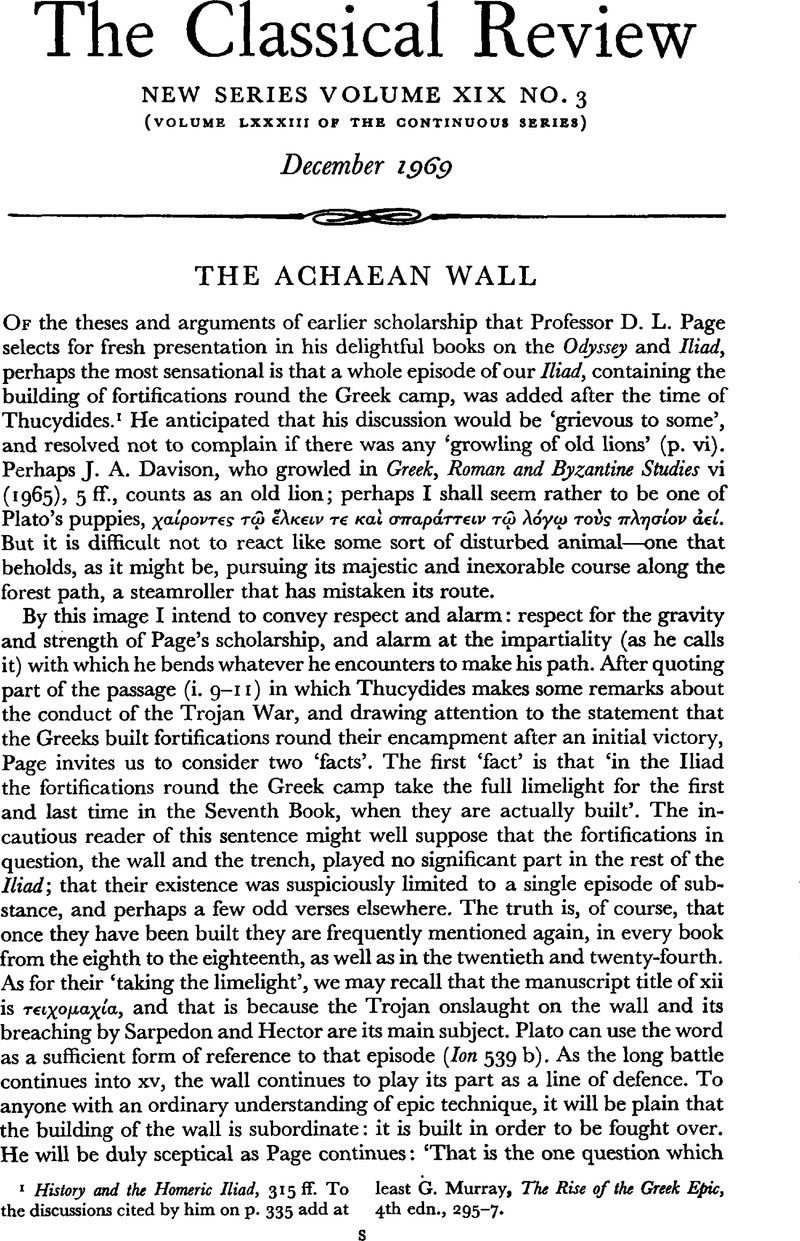No CrossRef data available.
Article contents
The Achaean wall
Published online by Cambridge University Press: 27 February 2009
Abstract

- Type
- Review Article
- Information
- Copyright
- Copyright © The Classical Association 1969
References
page 255 note 1 History and the Homeric Iliad, 315 ff. To the discussions cited by him on p. 335 add at least Murray, G., The Rise of the Greek Epic, 4th edn., 295–297.Google Scholar
page 256 note 1 On p. 319 Page suggests that if Thucy-dides did not know the passage in which the wall was built, he might have inferred that it was built at the beginning of the war from xiv. 30–2. It is not clear to me whether Page means that the lines actually imply such version. At any rate, they do not; they are not a piece of narrative about the landing (as Page's translation seems designed to suggest), but a statement of the local relationship between the wall and the ships that are highest up the beach. (Rightly Leaf.) Cf. xiii. 681 ff.
page 257 note 1 Cf. Bethe, E., Homer, i. 120 f.Google Scholar
page 258 note 1 Cf. Bethe, 219 ad fin.
page 258 note 2 Cf. Schadewaldt, W., Iliasstudien, 12–13, 61 n. 2.Google Scholar
page 258 note 3 Of course Homer was an ‘oral poet’, in the sense that he was practised in the techniques of oral poetry, and accustomed to use them in public performance. But what we have got is not what he recited on any of those occasions, but what he wrote down, or caused to be written down, over a period of (at the least) several months. It will have been a re-creation of the same type as would occur in an oral performance; but the absence of an audience meant that it was subject to no limit of length, and it grew in the writing to a length that no oral poem had ever had or sought.
page 258 note 4 See Bethe, 131 f., 162; Schadewaldt, 39–42; Kirk, The Songs of Homer, 219.
page 259 note 1 Wilamowitz, , Die Ilias und Homer, 58 f.Google Scholar, and Bethe, 104 ff., recognize their function as bridge allowing the introduction of ix; but they regard ix and x as independent lays by other poets, and Wilamowitz regards the bridge as the work of a post-Homeric poet who wanted to bring them into Homer's Iliad. I believe it is all Homer's work except x.
page 259 note 2 The other is that ‘let us burn the bodies’ represents the ordinary custom of cremating the dead, and should not be followed by ‘so that we can take the bones home’ (Sch. A ad loc., cf. ad iv. 174, xviii. 334). There is force in the argument. If Nestor is proposing a novel end, he ought not to mention only the ordinary means.


